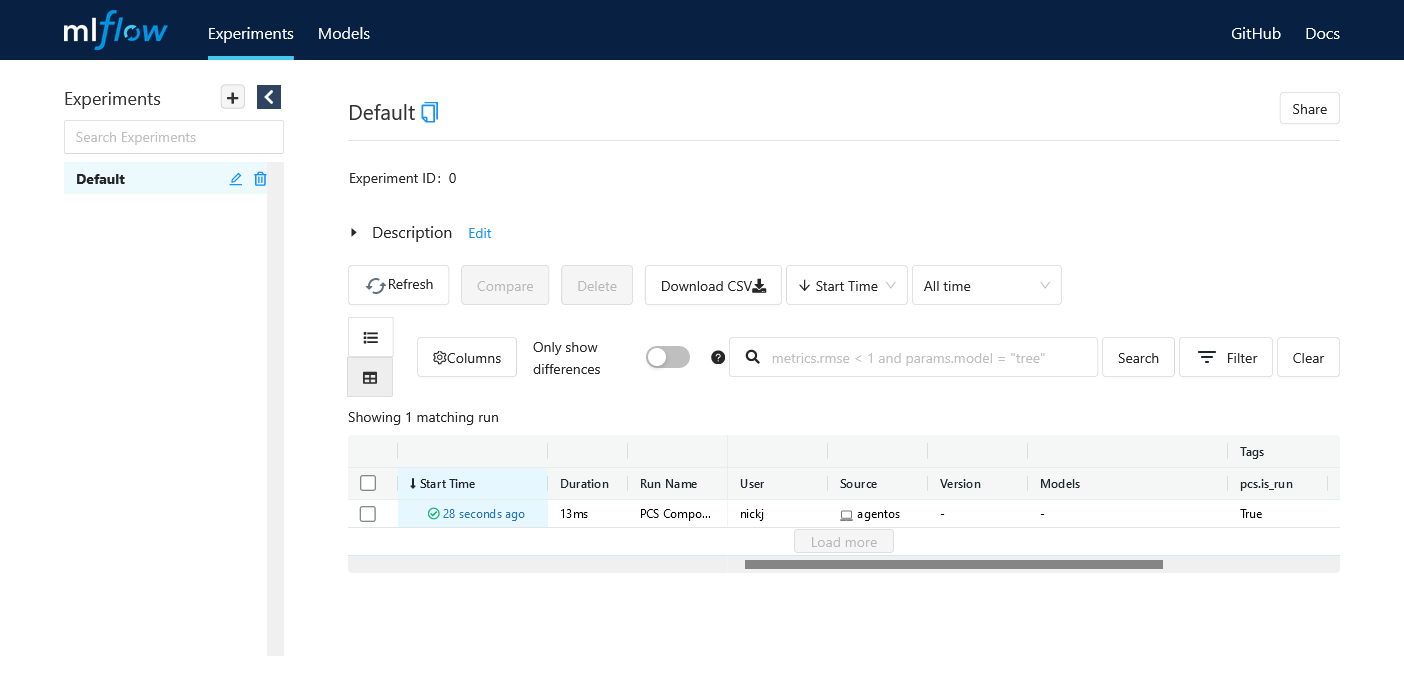Local Development Quick Start
The Python Component System (PCS) can also be used within a project you’re developing in your local development environment.
In this quickstart, we’ll work through an example of using PCS in a local
project. We’ll start by installing agentos. Run the following in your
shell:
pip install agentos
Now, let’s create a new directory for our project and initialize it. Run the following in your shell:
agentos init quickstart
cd quickstart
The agentos init . command creates (in the current directory) a default
project that illustrates the usage of PCS in a local development context. You
will notice that your directory now contains a components.yaml file along
with a number of Python files.
If you inspect components.yaml, you will see a human-readable registry of
the different Python classes (found in the newly created Python files) that
this project uses. These classes are referred to as Components in PCS and
they provide the foundation of any project built to execute in the PCS runtime.
The default project creates an agent that walks down a 1-dimensional corridor by randomly choosing to step left or right. Let’s try to run our default project:
agentos run agent
This command runs the default entry point of the agent Component as
defined in components.yaml. If everything is successful, you will see
output reporting how many steps your agent took to walk down the whole
corridor.
Tracking and Reproducibility
Now that we have executed our program, we can do a crash course in the tracking and reproducibility facilities provided by PCS. Run the MLflow UI in your shell and navigate to localhost:5000:
mlflow ui
You will notice that a run was created when you executed the agentos run
agent command.

Fig. 4 The MLflow experiment tracking page.
This run records sufficient information to reproduce the execution of your programs. If you navigate into the run detail page, you will notice two artifacts associated with the run: a registry file and a results file.

Fig. 5 A registry and a results file are associated with your run. The registry file records the information required to reproduce your run.
The registry file records information about the Components instantiated, the command executed, the arguments passed to generate the run. If shared with others, this file is sufficient to allow reproduction of your run.
The second file, the results file, records information about the return value of the run.

Fig. 6 The result file records information about the return value of your run.
Extending Our Agent
PCS is designed to make it easy to modularize your projects at the class level. We will now use PCS to add a new Component to our corridor-walking agent.
Our new Component will simply print an update to stdout whenever our agent
walks left or right. First let’s create our new Component. Create the file
movement_updater.py in your agent directory and add the following code to
it:
class MovementUpdater:
def update(self, action):
move_name = "left" if action == 0 else "right"
print(f"I just moved {move_name}")
Now let’s add this new Component to our registry file, open
components.yaml and add the following entry for our Component under the
components key:
movement_updater:
repo: local_dir
file_path: ./movement_updater.py
class_name: MovementUpdater
Now let’s update our agent Component to depend on the MovementUpdater.
Still in components.yaml, update the dependencies entry of the
agent Component to include movement_updater. Afterward, the entry
should look as follows:
agent:
repo: local_dir
file_path: ./agent.py
class_name: BasicAgent
requirements_path: ./requirements.txt
dependencies:
environment: environment
policy: policy
dataset: dataset
movement_updater: movement_updater
Now, finally, in our agent class, let’s make use of the movement updater.
Let’s open agent.py and update the run_episode() method to make use of
the movement_updater. We’ll add a call to movement_updater.update()
after each time the agent takes a step in the environment. Update the
run_episode() method as follows:
def run_episode(self):
curr_obs = self.environment.reset()
done = False
transitions = []
while not done:
action = self.policy.decide(curr_obs)
new_obs, reward, done, info = self.environment.step(action)
self.movement_updater.update(action)
transitions.append((curr_obs, action, new_obs, reward, done))
curr_obs = new_obs
self.dataset.add(transitions)
Notice that PCS automatically initializes an instance of the
MovementUpdater class and adds it as a member to the Agent class. We
can now run our agent again to ensure our MovementUpdater Component is
functioning as expected. On the command-line, run:
agentos run agent
and you should see output that looks like:
...
I just moved right
I just moved right
I just moved left
I just moved left
I just moved right
I just moved right
I just moved left
I just moved right
I just moved right
Results after 1 episodes
...
Great! It looks like our MovementUpdater Component is working as we
expected. Because we created MovementUpdater as a Component, PCS is able
to track arguments and dependencies of the Component for reproducibility
purposes. Additionally, this Component can be published individually and used
in other projects separate from the rest of the Components that constitute our
agent.
# TODO: sharing